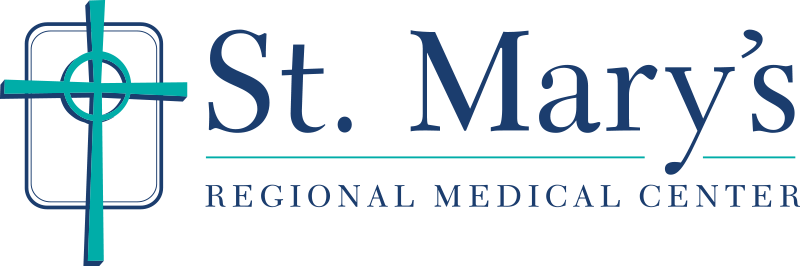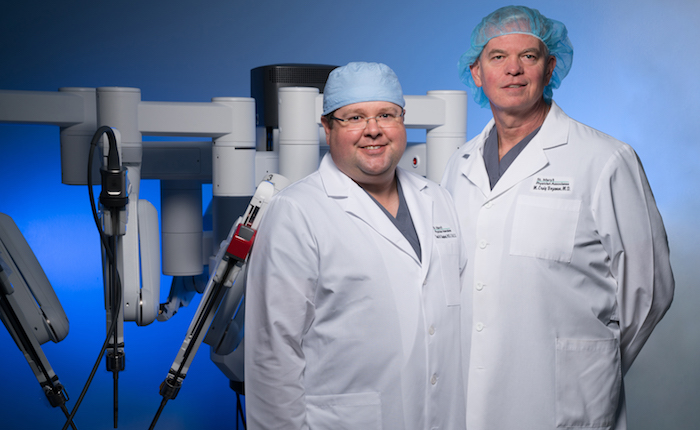Minimally Invasive Robotic Surgery
Robotically trained general surgeons at St. Mary’s include David W. Shepherd, MD, and M. Craig Bozeman, MD.
Surgeons at St. Mary's Regional Medical Center use the da Vinci® Surgical System. This advanced robotic platform enables doctors to perform complex procedures through smaller incisions than standard surgery using small tools that are operated robotically. Robotic surgery often results in less pain, scarring, trauma and blood loss than other surgical procedures, which can lead to a quicker recovery for the patient.
Surgeons at St. Mary's perform a variety of robotic procedures ranging from gallbladder and hernia surgery to hysterectomies to even intestinal and colon surgery.

The da Vinci System
The da Vinci Surgical System consists of a surgeon's console, a patient-side cart with four interactive robotic arms, a high-performance 3D, high-definition vision system and the system's EndoWrist® instruments. Using advanced robotic technology, the da Vinci System is designed to translate a surgeon's hand movements into precise movements of the EndoWrist instruments.
Hysterectomies Using da Vinci
Obstetrician/gynecologist, Chris Lee, DO, is now performing hysterectomies utilizing da Vinci technology in addition to open and laparoscopic techniques. The robotic-assisted surgery allows the surgeon to remove the uterus through a few small incisions (cuts). The surgeon will sit at a console next to the patient and operate using tiny instruments. The technology includes a high definition camera that provides a 3D magnified view inside the body. Every movement made by the surgeon is translated by the robotic system, allowing the instruments to be rotated and moved with precision.
Potential benefits of a benign hysterectomy when using this technology include:
- A shorter hospitalization
- A few small incisions when compared to an open procedure, resulting in fewer or smaller scars
- A patient may have fewer complications
Advantages of Robotic Surgery
Potential benefits of minimally invasive robotic surgery include:
- Shorter hospital stay (one day in most cases)
- Significantly less pain after surgery
- Quicker recovery and return to normal activities
- Fewer complications and less risk of infection
- Smaller incisions and less scarring
ROSA® Robotic Technology
We also use Robotic Surgical Assistant (ROSA®) knee robotic technology, which is designed to help a specially trained surgeon tailor the placement of the knee implant in patients who need a total knee replacement. St. Mary’s is the first hospital in the region to acquire this technology.
Candidates for Robotic Surgery
The best candidates for robotic surgery are chosen on an individual basis by their doctor. Ask your doctor about robotic surgery and whether or not your diagnosis and situation will lend itself to robotic surgery.
Individual results may vary. There are risks associated with any surgical procedure. Talk with your doctor about these risks to find out if robotic surgery is right for you.

